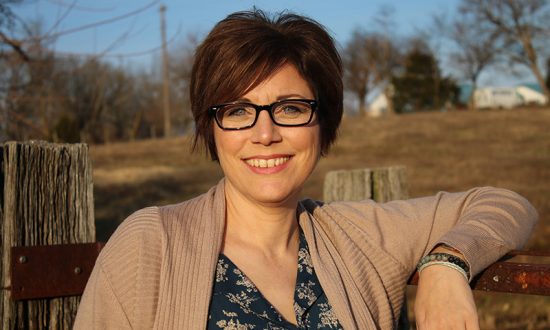Amy Johnson graduated from Missouri State University in Springfield, MO with a B.S. in Secondary Education and later completed her Masters in Curriculum, Instruction, and Assessment from Walden University. Amy began teaching in 1997 and spent the next 13 years instructing students, leading teachers, and serving as a school-wide Curriculum Coordinator. Amy began her virtual education experience as a curriculum writer and reviewer for various online curriculum providers.
In 2015, Amy began as an English teacher at Arkansas Virtual Academy, a K-12 open-enrollment public charter school housing over 2,800 students. She went on to serve as an Instructional Coach before stepping into the role of Academic Administrator. As an AA, Amy led to a change in teacher effectiveness, student relationship building, and clear process and procedure creation. Amy accepted the position of Head of Schools at Arkansas Virtual Academy in 2018 and is currently leading the charge for individualized learning and growth for students and teachers alike. She is passionate about student achievement and is known as an innovator and creative thinker in student achievement and success.
In the last 3 months, the world as we know it has changed dramatically. What once were simple tasks, like getting groceries or scheduling a haircut, have now moved to events that require a certain amount of logistical planning, if they are even allowed at all. This shift in mindset was not lost on the world of education, with schools closing and alternative methods of instruction flying in every foreseeable direction. As we live through what are considered short-term effects of COVID-19, we would be remiss if we didn’t begin to think about the long-term effects. All of the things we cannot do at this time, will deeply affect what we will do in the future. If they do not, we’ve missed the point entirely.
This frozen moment in time has allowed some retrospect in the world of education. Suddenly a wild shift has taken place to virtual learning as if it is a brand-new land to be discovered and pioneered. However, virtual learning and instruction have been in play for over 20 years, yet it was simply not respected or needed by the machined educational establishment. A system that was created during the industrial age of manufacturing, specializing in mass identical products for output, has struggled to recognize the unique and individual approach of virtual education. And while it should not be argued that virtual education is for everyone, it can be for anyone.
While virtual education is full of challenges and difficulties, it does recognize a student’s individual strengths and weaknesses. It allows for every single student to learn uniquely and effectively, while also honoring their interests and passions in and out of school. This approach is one that must move to the forefront of education in the future, no matter what form it takes. Students first rather than system first. And shouldn’t it have been that way all along?
Many will argue that relationships cannot be built via a virtual platform. The response should be, “Why not?” Those relationships may look different, they may have a different context, but they are no less deep or meaningful. In fact, most students and families report that their relationships are just as strong or even more so than what they experienced in a more traditional education setting. Some will move that students aren’t socialized in a virtual setting. Again, the response, “Why not?” Virtual schools, such as ours, offer student organizations, prom, graduation, dances, community service projects, outings, and study groups that all provide face to face socialization opportunities for community building. And that doesn’t even take into consideration those schools that offer blended learning opportunities, another great way to marry traditional classroom environments with virtual learning.
Ultimately, the larger question of “Why not?” must be applied in a wider swath when considering educational options for students. The body of educational research about what works for instruction and mastery learning is wide and deep. Yet, there has not been a proven, singular, consistent method that has risen to the top as the correct way. The reason? No two students are the same. They don’t learn, understand, absorb, or communicate identically. So multiple practices must be utilized. We must ask the question, “Why not?” Why could a student not learn exceedingly well online? Why could a student not be successful in a traditional school setting? What’s missing? What is needed? And why, for goodness sake, would we not investigate and employ what would work to help a child be successful? Even if it seems outside of the box.
In our latest pandemic, over one-third of the population in the United States alone shifted to a work-at-home arrangement. In so doing, companies will begin to investigate the positive shifts that could be applied long-term for a work-at-home arrangement for their companies. Twitter just recently announced that their employees will now work from home, forever. It is highly likely that a large spike in telecommuting, virtual, or work-at-home jobs is inevitable as the world begins to roll back to “normal”. How will we prepare our students for a future of working virtually? The soft skills required in a virtual world, while similar, are also very different from that in a face to face environment.
The need of the student and the future of work must drive the direction for educational institutions moving forward. Additionally, we must be prepared for a lesser disruption in the future, should the need arise again. For many years, the perspective of what we cannot do inside of education has diminished the why-not mentality. It is time to shift the question if we truly want a different answer and begin to explore outside of the lines we’ve held ourselves to. Instead of barriers, we must see opportunities. Instead of systems, we must see students. We must move from cannot to why not to embrace the variety of learning and instruction that is needed to experience success for all.




